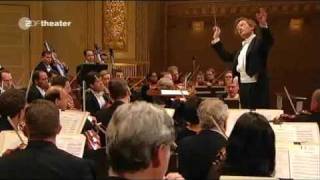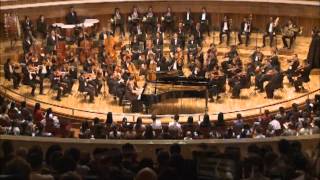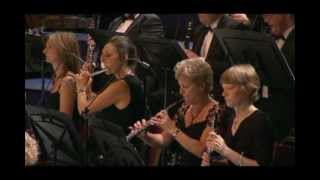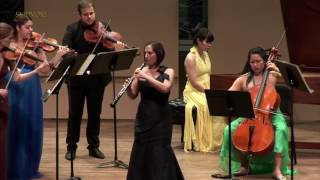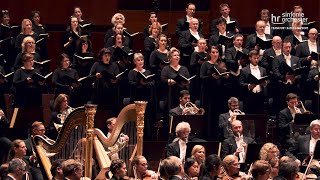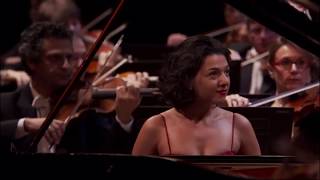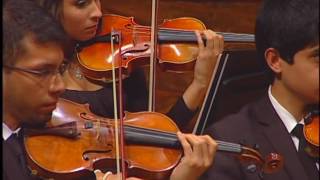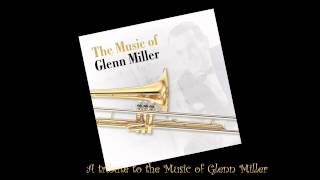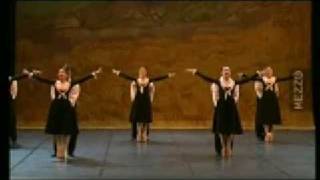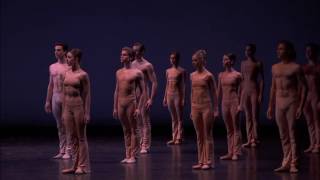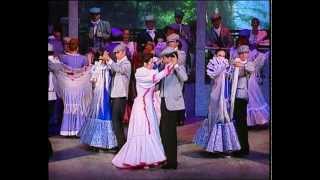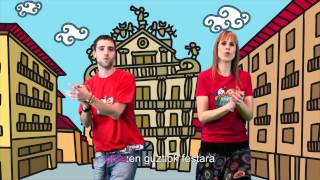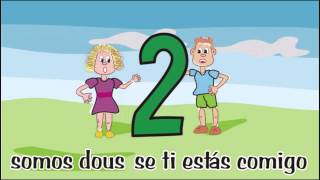Recommended music videos for initiation to classical music
Johann Strauss (junior) (1825-1899) was an Austrian composer, the son of Johann Strauss and brother of the composers Josef Strauss and Eduard Strauss ; known during his lifetime as "the waltz king", he was instrumental in the waltz's evolution and sophistication from a peasant dance to an entertainment dance for the Imperial Court . He is best known of the family for his waltzes, polkas and marches, and was also the composer of several operettas. His father wanted his son to avoid the hardships of a musician's life, so it was his mother who helped and encouraged him to focus on music. His work forms the basis of the repertoire offered annually at the Vienna Philharmonic 's New Year's Concert .
Catalogue of the works of Strauss II . His works are classified by their Opus number (from Latin opus 'work'; op. abbreviation) which is a term used in music to catalogue the works of most composers since the 17th century .
The Polka (or polka) is a popular dance that appeared in Bohemia (now the Czech Republic) around 1830, which began to become popular in Prague from 1835. Its music is written in 2/4 time and fast tempo; it is danced with lateral steps and rapid evolutions; it became very popular in Europe and America .
Today we attend the performance of one of these polkas by the Vienna Boys' Choir accompanied by the Vienna Philharmonic under the baton of Zubin Mehta , an Indian conductor, considered one of the most eminent conductors of today.
Sergei Rachmaninoff (1873-1943) was a Russian pianist, conductor and composer born into an aristocratic family of musicians. He began playing the piano at the age of four and studied at the St. Petersburg Conservatory and later at the Moscow Conservatory. After the premiere of his First Symphony and the criticism it received, he suffered a creative crisis for four years. Once he had overcome this, he wrote the Piano Concerto No. 2 , which received worldwide recognition. After the Russian Revolution, he moved with his family to Switzerland and in 1935 to the USA , where he wrote numerous works for solo and concert piano, chamber music, symphonic and lyrical music. He is considered one of the most influential pianists of the 20th century and one of the most representative composers of Russia .
The Piano Concerto No. 2 , Op. 18 in C minor, is a piece composed for piano and orchestra by Sergei Rachmaninoff between the autumn of 1900 and April 1901. The complete work was premiered with the composer as soloist on 27 October 1901, with his cousin Aleksandr Ziloti conducting.
Today the pianist Indah Lestari Hertanto , accompanied by the Jakarta Simfonia Orchestra , conducted by maestro Rebecca Tong, offers us part of the First Movement of the aforementioned concert.
Wolfgang Amadeus Mozart (1756-1791) is considered one of the three giants of musical composition along with Bach and Beethoven . A child prodigy born in Salzburg , Austria , at the age of six he mastered the keyboard and the violin and began to compose; taking advantage of these abilities, his father, Leopold , also a composer, exhibited him on exhausting tours of different European courts. At the age of seventeen he was hired as a musician at the court of Salzburg, but his restlessness led him to travel in search of a better position, always composing prolifically. During his visit to Vienna in 1781, after being dismissed from his position at court, he decided to settle in this city, where he achieved the fame that he maintained for the rest of his life, despite going through difficult financial situations.
Mozart Opera Arias
00:00 WA Mozart - Il Re Pastore - L'amero, saro costante (Kathleen Battle, Royal Philharmonic Orchestra, André Previn) 07:09 WA Mozart - Le nozze di Figaro - Porgi amor, qualche ristoro (Kathleen Battle, Metropolitan Opera Orchestra, James Levine) 11:23 WA Mozart - Zaide - Ruhe sanft, mein holdes Leben (Kathleen Battle, Metropolitan Opera Orchestra, James Levine) 17:54 WA Mozart - Die Entführung aus dem Serail - Ach ich liebte (Kathleen Battle, Metropolitan Opera Orchestra, James Levine) 23:08 WA Mozart - Cosi fan tutte - Una donna a quindici anni (Kathleen Battle, Metropolitan Opera Orchestra, James Levine) 26:35 WA Mozart - La clemenza di Tito - S'altro che lacrime (Kathleen Battle, Metropolitan Opera Orchestra, James Levine) 29:28 WA Mozart - Don Giovanni - Vedrai, carino (Kathleen Battle, Metropolitan Opera Orchestra, James Levine) 33:14 WA Mozart - Die Zauberflöte - Ach, ich fühl's, es ist verschwunden (Kathleen Battle, Metropolitan Opera Orchestra, James Levine) 37:16 WA Mozart - Die Zauberflöte - Bald prangt, den Morgen zu verkünden (Kathleen Battle, Metropolitan Opera Orchestra, James Levine) 43:05 WA Mozart - Le nozze di Figaro - Deh Vieni, Non Tardar (Kathleen Battle, Wiener Philharmoniker, Riccardo Muti)
Kathleen Battle is a coloratura lyric soprano born on August 13, 1948, in Portsmouth , Ohio . Initially known for her concert repertoire with the world's leading orchestras in the early and mid-1970s, Battle made her opera debut in 1975. Battle expanded her repertoire to include lyric soprano and coloratura soprano registers during the 1980s and early 1990s. Her operatic career developed throughout the 1980s with renowned conductors such as Herbert von Karajan, Riccardo Muti, Zubin Mehta, Seiji Ozawa, Claudio Abbado, Georg Solti, Carlo Maria Giulini Ohio, James Levine ... She performed at the Vienna New Year's Concert on 1 January 1987 at Karajan 's invitation, the only time the conductor conducted this event and the first time a singer appeared as soloist.
Bernard Herrmann (1911 –1975) was an American composer who specialized in the film genre. After winning a composition award at the age of thirteen, he decided to concentrate on music and went to New York University ; he also studied at the Juilliard School , and at age 20 formed his own orchestra, the New Chamber Orchestra of New York . He later became chief conductor of the CBS Symphony Orchestra , introducing more new works to American audiences than any other conductor with numerous television premieres. Awarded an Academy Award for Best Dramatic Film Score for his work on The Devil and Daniel Webster (1941), he is best known for his collaborations with Orson Welles (Citizen Kane, War of the Worlds) and Alfred Hitchcock , with whom Herrmann scored most of his greatest hits (Vertigo, The Man Who Knew Too Much, Psycho).
Citizen Kane is a 1941 American drama film directed, produced by, and starring Orson Welles and written by him and Herman J. Mankiewicz . It is considered one of the masterpieces of cinema history, being particularly praised for its innovation in music, photography, and narrative structure.
Recommended classical music videos
Alessandro Marcello (1673–1747) was an Italian nobleman and dilettante who was interested in a wide range of fields, including poetry, philosophy, mathematics and, perhaps most notably, music. A contemporary of Antonio Vivaldi , Marcello gave concerts in his hometown of Venice . He composed several sets of concertos, including concertos under the title La cetra (the lyre), as well as cantatas, arias, canzonettas and violin sonatas. He used, according to the Grove Dictionary of Music and Musicians , “a concise use of counterpoint in the Vivaldian style, raising his rank to the highest in the Venetian Baroque classical concerto”; Marcello is today regarded as a highly competent composer. His brother Benedetto Marcello (1686–1739) was also a celebrated composer.
Oboe Concerto in C minor. The concerto in question is the only one that has come down to us from the hand of Alessandro Marcello , brother of the also celebrated composer and writer Benedetto Marcello . The unusual factor in the set of parts found in the city of Schwerin is that the parts of the manuscript are presented in C minor instead of in D minor, the key of the parts published in Amsterdam in 1716 by Jeanne Roger . While at the university I noticed, furthermore, that J.S. Bach had composed this same concerto for a solo harpsichord, in the key of D minor (BWV 974) (Nancy Bonar Lehrer).
The concert is divided into three movements: I (0´48´´) ALLEGRO MODERATO .-. II (3´46´´) ADAGIO .-. III (9´03´´) ALLEGRO. Concerto, offered today by the American oboist ToniMarie Marchioni accompanied by the Ensemble Connect .
Johannes Brahms (1833-1897), born in Vienna , where he spent most of his life, was the most conservative composer of the Romantic movement, as opposed to the progressive movement led by Liszt and Wagner . His music is firmly rooted in the structures and composition techniques of the classical masters, and its formal structures faithfully follow the patterns of Classicism , although he uses some of the color of Romanticism and popular music. Eminently perfectionist in character, he wrote for piano, chamber ensembles, symphony orchestra, for solo voices and for choir. It was Hans von Bulow who proposed the “three Bs” referring to Bach , Beethoven and Brahms as the three main pillars of the history of music.
Catalogue of Brahms's works . His works are classified by their Opus number (from Latin opus 'work'; op. abbreviation) which is a term used in music to catalogue the works of most composers since the 17th century .
A German Requiem is a composition for soprano, baritone, chorus and orchestra by Johannes Brahms . Catalogued as his opus 45 , it is a meditation on life and death based on biblical texts. In this sense, Brahms moves away from the Catholic tradition and places himself in the orbit of the teachings of Lutheranism by selecting biblical texts that avoid references to eternal life, the final judgment or a punishing God . The work consists of seven parts: I (00´44´´) SELIG SIND, DIE DA LEID TRAGEN Blessed are those who suffer .-. II (12´05´´) DENN ALLES FLEISH, ES IST WIE GRASS For all flesh is as grass .-. III (27'08'') HERR, LEHRE DOCH MICH, DASS EIN ENDE MIT MIR HABEN MUSS Lord, show me my term.- . IV (37´06´´) WIE LIEBLICH SIND DEINE WOHNUNGEN How beautiful are your rooms .-. V (42´36´´) IHR HABT NUN TRAURIGKEIT You are overwhelmed by sadness.- . VI (49´29´´) DENN WIR HABEN HIE KEINE BLEIBENDE STATT Because we don't have a permanent place here .-. VII (1h 00´49´´) SELIG SIND DIE TOTEN, DIE IN DEM HERRN STERBEN Blessed are those who die in the Lord . After the first three parts, which are sombre and dramatic in tone, No. 4 creates a certain contrast of serenity, which is also found in No. 5, with its magnificent soprano solos. Very complex in its organisation, No. 6, where baritone and chorus alternate, ends with a fugue. No. 7 ends the work in a mood of beatitude.
Today we are treated to the music of Christiane Karg (Soprano), Michael Nagy (Baritone), the MDR-Rundfunkchor with its director Nicolas Fink and the Frankfurt Radio Symphony Orchestra, all conducted by the American maestro David Zinman.
Edvard Grieg (1843-1907) was a Norwegian composer and pianist, widely regarded as one of the leading exponents of musical romanticism. His mother, Gesine , was his first piano teacher; later, he met the legendary Norwegian violinist Ole Bull , a family friend and his mother's brother-in-law. Grieg adapted many themes and songs from his country's folklore, thus contributing to the creation of a Norwegian national identity, as did Jean Sibelius in Finland or Antonín Dvořák in Bohemia . His most important works are the Piano Concerto in A minor , the intimate Lyric Pieces (for piano), the Holberg Suite (for string orchestra) and, especially, Peer Gynt, incidental music that he wrote on behalf of the writer Henrik Ibsen for his drama of the same name.
Catalogue of Grieg's works . His works are classified by their Opus number (from Latin opus 'work'; op. abbreviation) which is a term used in music to catalogue the works of most composers since the 17th century .
The Piano Concerto in A minor, Op. 16 , composed by Edvard Grieg in 1868, was the only concerto that Grieg completed. It is one of his most popular works, and ranks among the most popular of the genre. Grieg , who was only 24 at the time of composition, had been inspired by Robert Schumann 's Piano Concerto (Op. 54), also in A minor.
Structure. The concerto consists of three movements: I (0´4´´) ALLEGRO MOLTO MODERATO ( A minor ). The first movement is in sonata form and is characterized by the roll of timpani in its first bar leading to a dramatic piano flourish, which leads to the main theme. Then, the key changes to C major , for the secondary theme. Later, the secondary theme appears again in the recapitulation, but this time in the key of A major . The movement ends with a virtuoso cadenza (8´51´´ - 11´41´´) and a flourish similar to that at the beginning of the movement. II (13´14´´) ADAGIO ( D flat major ). It is a lyrical movement in D flat major , which leads directly to the third movement. The movement is in ternary form (ABA). The B section is in D flat major and E major , then returns to D flat major for the piano repeat. III (19´26´´) ALLEGRO MODERATO MOLTO E MARCATO - QUASI PRESTO - ANDANTE MAESTOSO (A minor → F major → A minor → A major). It opens in A minor with an energetic theme (Theme 1), which is influenced by the Norwegian Halling dance. It is followed by a lyrical theme in F major (Theme 2) and the movement returns to Theme 1. After this recapitulation is a major section Quasi presto , consisting of a variation of Theme 1. The movement concludes with the Andante maestoso in A major , which consists of a dramatic rendition of Theme 2 (as opposed to the lyrical style with which Theme 2 is introduced).
The version we offer today features the Georgian pianist, naturalized French, Khatia Buniatishvili accompanied by the Orchestre National du Capitole de Toulouse conducted by the Russian maestro Tugan Sokhiev.
Sergei Prokofiev (1891-1953) was a Soviet composer, pianist and conductor, considered one of the leading composers of the 20th century and creator of numerous masterpieces in different musical genres. His works include such popular works as The Love for Three Oranges March , the suite Lieutenant Kikhe , the ballet Romeo and Juliet , Peter and the Wolf ... Within the established forms and genres in which he worked, he created seven operas complete works, seven symphonies, eight ballets, five piano concertos, two violin concertos, one cello concerto and nine completed piano sonatas. After his death, Arthur Honegger proclaimed that Prokofiev "will remain for us the greatest figure in contemporary music."
Catalogue of Prokofiev's works . His works are classified by their Opus number (from the Latin opus 'work') which is a term used in music to catalogue the works of most composers. Since the 17th century , this form of cataloging began to be used whenever a work was published, preceding the order number of the work with the word Opus , or its abbreviation Op ..
Symphony No. 1 in D major, Op. 25 , also known as the " Classical Symphony ", was composed by Sergei Prokofiev between 1916 and 1917. It was partly an exercise in writing music away from the piano in an attempt to discover "more transparent orchestral colours". Prokofiev assigned it the appellation "Classical" and attempted to emulate the compositional style of Joseph Haydn , although he changed some of the structure of the symphony to reflect changing compositional practices. In fact this symphony is considered one of the first works belonging to the musical Neoclassicism of the 20th century . The premiere was held on 21 April 1918 in Petrograd , with the performance of the Old Court Orchestra under the direction of the composer himself.
Structure . It has a conventional four-movement structure, with two fast outer movements (Allegro and Vivace, respectively), a slow movement (Larghetto) and one inspired by a stylized dance (Gavotte). Its textures are economical, its scoring appropriate for a late 18th-century orchestra and its character decidedly light-hearted, very much in the spirit of Haydn 's symphonies.
I (0´22´´) ALLEGRO . It is written in the key of D major and in alla breve time . It lives up to its name by adopting a textbook-style sonata-allegro form, with its clearly punctuated exposition and development sections, followed by the recapitulation. The first theme is typically eighteenth-century and the second theme has burlesque aspects, marked by the staccato of the bassoon. The development, however, does not at all have the classical connotations of sonata form, as Prokofiev modulates naturally from one key to another and moves from D minor to an unusual A flat major.
II (5´09´´) LARGHETTO. The Movement is in A major and in 3/4 time. It responds to a ternary form since it is divided into three sections that follow the ABA pattern. The third movement, consisting of a minuet and trio , is replaced by a Mozartian-style gavotte , although its ternary rhythm makes it similar to a minuet . The trio section is given a pastoral flavour by its musette -style bassoon. The main theme is an elegant melody, which is played by the violins, reaching the highest notes of the instrument. The rhythmic part is decidedly typical of Prokofiev , especially the insistent accompaniment of the bassoon.
III (9´30´´) GAVOTTA . NON TROPPO ALLEGRO . Again in D major and in 4/4 time. This is a short and stylised piece, very pleasant, characterised by unusual octave leaps.
IV (11´14´´) FINALE. MOLTO VIVACE. It resumes the initial key and the alla breve rhythm. Structurally it mixes sonata form with rondo ( ABACAD... ). Like most classical Finales, it is exuberant, exciting and powerful. The lively first theme, enriched with arpeggios and fast passages, is followed by the second theme, which is mainly entrusted to the woodwinds. A third theme recalls a cheerful Russian folk melody. A rapid development leads to the conclusion of a catchy but by no means simple composition, full of harmonic novelties, sparkling sonorities, wit and irony.
Recommended music videos for all tastes
Alton Glenn Miller (1904-1944) was an American trombonist, composer and big band leader. At the age of 33 he founded the Glenn Miller Orchestra with which he performed, recorded and sold his creations, which were huge successes; between 1939 and 1942 alone he had 16 number one records in the USA . In 1942, in the midst of World War II, he enlisted in the army with the mission of performing before companies of American soldiers; on one of these trips, while crossing the English Channel , his plane disappeared and was never heard from again. The current Glenn Miller Orchestra was founded in 1956 with the same ideas and objectives as it had at the beginning.
Katy Perry (born 1984 in California) is an American singer-songwriter, actress, businesswoman, and model who rose to fame in 2008 with her debut album One of the Boys . In 2010–11, she achieved even greater success with her second album, Teenage Dream, which promoted it with six singles, five of which peaked at number one on the Billboard Hot 100 , making her the first female artist to achieve this feat and the second overall after Michael Jackson 's 1987 album Bad . Perry has received numerous awards, including four mentions in the Guinness Book of World Records . Over the course of her career, she has sold 16 million albums and 135 million singles worldwide, making her one of the best-selling artists of all time.
Umberto Tozzi (Turin, March 4, 1952) is an Italian singer-songwriter who rose to fame in 1972 with the song "Un corpo un'anim a", a song that won the " Canzonissima " contest that year. In 1977 he achieved his first big hit with the song " Ti amo ", which would make him famous in Italy , followed by " Tu " (1978), which would lead him to a great tour through Australia , where its sales placed it among the most successful albums of that year. The following year he achieved success again with " Gloria " (1979); the latter led him to be heard all over the planet and in different languages. In 1980 he also gained fame after his tour of several South American countries, with a version of " Ti amo " translated into Spanish. Today, Tozzi is still active, performing regularly throughout Europe .
Nena (Gabriele Susanne Kerner) is a singer born on 24 March 1960 in Hagen, Germany ; she spent the first part of her childhood in Breckerfeld and later lived in Hagen . She acquired her nickname at the age of three, on a holiday in Spain with her parents. In 1987 she met actor Benedict Freitag , who is the father of her eldest son and her twins. With Cole Palmer , a drummer and music producer, she had two more children. Nena achieved worldwide fame thanks to the song "99 Luftballons" with her group Nena . She was a member of the bands The Stripes from 1979 to 1981 and Nena from 1982 to 1987; since 1989 she has been a solo artist. With the re-release of her own hits, Nena 's career experienced a second period of success in 2002.
Recommended peculiar videos
Georges Bizet (1836-1875) was a French pianist and composer who did not enjoy much success during his lifetime. Bizet won several awards during his brilliant career as a student at the Paris Conservatoire , including the prestigious Prix de Rome in 1857. He was recognised as an exceptional pianist, although he preferred not to exploit his ability and rarely played in public. His best-known opera, Carmen , was a sensational success at its premiere, but he did not live to enjoy it as he died of a heart attack three months later at the age of 39. His other works were neglected and gradually recovered in the 20th century. Despite this, he is now regarded as a benchmark of the 19th century and a brilliant and imaginative composer.
L'Arlesienne ( The Girl from Arles ) is a work of incidental music composed by Georges Bizet for voice, choir and chamber orchestra, made up of 27 numbers of different lengths, of which today we will attend five numbers choreographed by Roland Petit and performed by Jérémie Bélingard , Eleonora Abbagnato and the National Ballet of the Paris Opera .
The Ballad appeared in Europe in the 14th century as a way of expressing courtly song. In the 19th century , Frédéric Chopin composed four piano works with this title, evidently inspired by the literary genre. With this, he gave birth to a new musical genre: The Ballad .
Lang Lang (1982) is a famous Chinese virtuoso pianist considered by many critics, professionals, and piano experts to be one of the finest pianists of his generation. He was the first Chinese pianist to be engaged by the Berlin Philharmonic , the Vienna Philharmonic , and some of the major and important American orchestras. Music critics from the Chicago Tribune called him "the greatest and most exciting keyboard talent we have encountered in many years of attending piano recitals."
The Houston Ballet is an American ballet company funded by the Houston Ballet Foundation and which also supports the Houston Ballet Academy , where more than half of the company's dancers rehearse. Founded in 1969, it is the fourth largest ballet company in the United States , with its base in Houston, Texas . Since its founding, the organization has had the following directors: Tatiana Semenova (1955–1967), Nina Popova (1967–1976), Ben Stevenson OBE (1976–2003), Stanton Welch AM (2003–present).
Today the Houston Ballet with Derek Dunn as soloist offers us Chopin 's Ballad No. 1 choreographed by Stanton Welch and with Lang Lang on the piano.
La Gran Vía is a zarzuela in one act and five scenes with music by the masters Federico Chueca and Joaquín Valverde and libretto by Felipe Pérez y González, premiered at the Teatro Felipe in Madrid on July 2, 1886. It became so famous that some scenes had to be changed, since being a current affairs magazine, it had to be modernized. Thus new scenes appeared such as En la calle de Alcalá , or El bazar de muñecas . It is an exponent of the small genre taken to the field of the current affairs magazine, where the social and political concerns of the time were exposed with good humor and satirical sense. The libretto skillfully and satirically portrays the news of the moment, showing on stage a great parade of types and comic situations with great effect.
The chotis , as we know it today, is the representative dance of Madrid's traditionalism. Its name derives from the German term Schottisch ("Scottish"), a Central European social dance which in Vienna was attributed to have originated in a Scottish dance. The chotis arrived in Madrid in 1850 and it seems that it was danced for the first time in the Royal Palace , on the night of November 3, 1850, under the name of 'German polka '. Over time it became popular and the quintessential traditional dance of the people of Madrid . The Madrid chotis is a slow, tight dance that is usually performed by taking three steps to the left, three to the right and back. At the moment when the music changes, the couple must change the circular direction of the movement.
The term African dance refers primarily to dance in the sub- Saharan portion of Africa , and to numerous types of African dances resulting from the numerous cultural differences in musical styles. These dances are closely related to sub- Saharan musical traditions and the Bantu sense of rhythm. African dance uses the concept of polyrhythm and full body articulation. Dances allow for the interpretation of social patterns and values and help people to work, mature, pray and criticize community members while contributing to the celebration of festivals and funerals, competitions, recitation of history, proverbs and poetry; and to getting closer to the gods. In general, African dances promote participation, with spectators taking part in the same artistic expression. With the exception of some spiritual, religious or initiation dances, traditionally there are no barriers between the dancers and the audience. Even ritual dances often have segments in which the audience participates. Traditional dance in Africa is a collective element, expressing the life of the community rather than that of individuals or couples. The first chroniclers already noted the absence of couples dancing in close proximity: such expressions were considered immoral by many traditional African societies. In all the dances practiced south of the Sahara there seems to be no evidence of dance patterns of a man-woman couple prior to the colonial era when such practice was considered an undignified expression.
Recommended music videos for children
Various Wikipedia articles have been used to write these texts.
The texts of Videomusicalis are written in Basque, Spanish and English.





